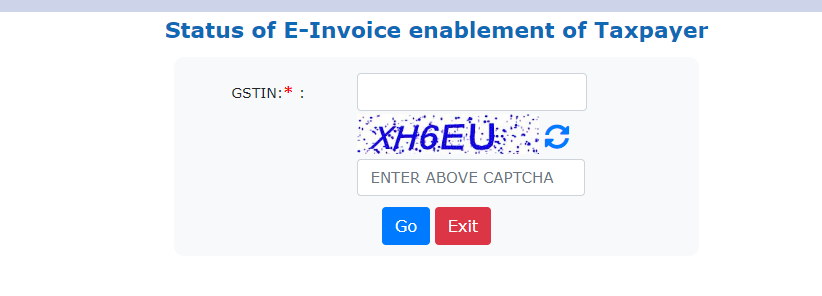E-invoicing is a new reform which entails the generation of invoices in an electronic format, which facilitates machine readability across ERP and tax systems.
The government has mandated the applicability of e-invoicing to businesses having an annual turnover exceeding INR 500 crore with effect from.1st Oct 2020.
Refer CBIC Notifications mentioned below:
68/2019 | 69/2019 | 70/2019 | 02/2020 | 13/2020 | 60/2020 | 61/2020

Taxpayers exempted from e-invoicing:
- Those having annual turnover below INR. 500 Cr.
- SEZ Units, Insurer, Banking Company, Financial Institution including NBFC, GTA, Supplier of passenger transportation service, Multiplex screens
Type of transactions covered under e-invoicing
- Invoices, Credit Notes and Debit Notes as applicable for
- Outward supplies (goods and services) coming under GST purview
- B2B
- Domestic Sales (intra-state and inter-state)
- Inter-state STO
- Exports
- With pay of IGST & without IGST
- Supply to SEZ (with pay / without pay of IGST)
- Deemed exports
- B2B
- Not applicable:
- B2C (supplies to unregistered dealers or consumers)
- ISD Invoices
- Job Work / Bill of supplies & other documents not coming under GSTR1 purview
- Outward supplies (goods and services) coming under GST purview
How to find out if a tax-payer is coming under the purview of e-invoicing?
https://einvoice1.gst.gov.in/
Click on Search > e-invoice status of Taxpayer

The different modes of generating the IRN under e-Invoicing:-
- No change in the way Tax invoices, credit notes and debit notes are raised in ERP
- However, the invoice data needs to be registered with the Invoice Registration Portal (IRP), which expects data in a prescribed format (schema) including mandatory fields and conditional-mandatory fields. The final data expected by IRP is in JSON format
- This invoice registration at IRP can be done in multiple ways:
- Directly through system integration from ERP with the e-invoice portal (IRP) via API
- Through system integration (ERP with IRP) via a GST Suvidha Provider (GSP) via API
- Through system integration via an Application Service provider system (ASP) & GSP
- Directly by logging in to the portal (IRP) and manually entering invoice data (proposed)
- Through a combination of an offline tool provided (data entry and conversion to JSON) followed by the bulk upload option in the IRP portal (size limit of 2 MB per upload)
- Note: E-commerce operators can register e-invoices on behalf of supplier

- Invoice Reference Number (IRN)
IRN is generated by IRP, based on:
Seller’s GSTIN
Document Type
Document Number
Financial Year
SHA256 algorithm for IRN
64 digit, alpha-numeric code
- Quick Response code (QR) by IRP
Machine Readable (via prescribed app)
- Supplier GSTIN
- Recipient GSTIN
- Supplier Invoice number
- Date of invoice
- Invoice value
- Number of line items
- HSN Code (Main item)
- IRN
Share this Post













